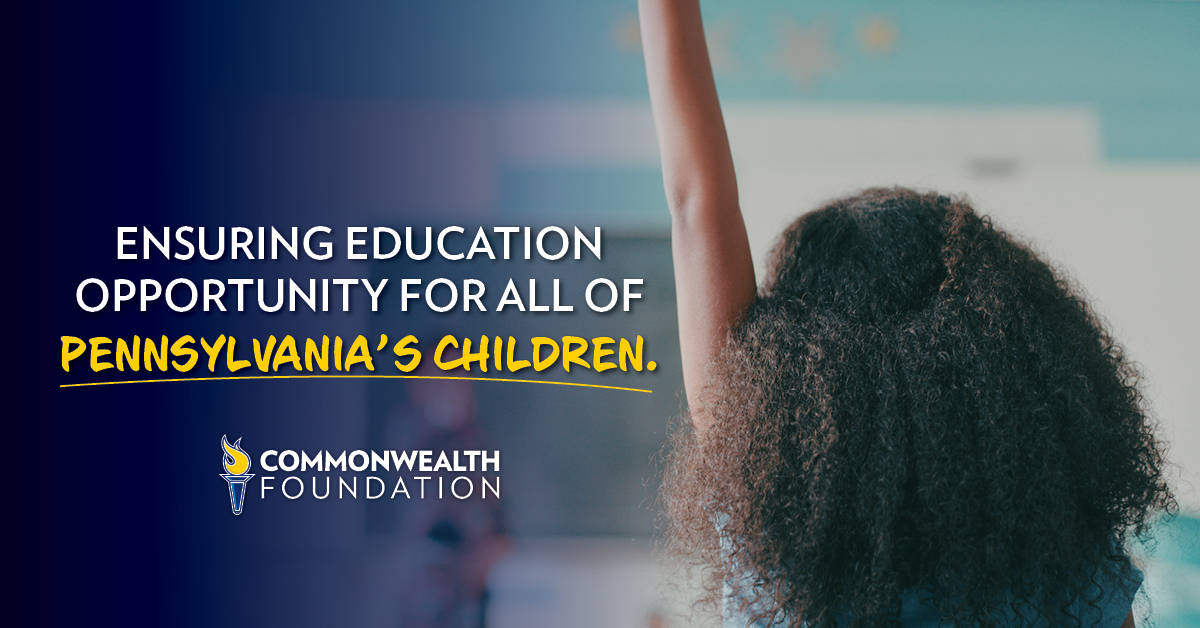Commentary

Op-ed: Parents Deserve Funding to Get Students Back on Track
A version of this commentary was originally published in The Federalist.
Ahh … the good ol’ days.
That phrase used to refer to some halcyon days in the distant past. Now it means January. Before the novel coronavirus upended life as we know it. But, as Billy Joel reminds us, “The good ol’ days weren’t always good, and tomorrow ain’t as bad as it seems.”
Many of the problems exacerbated by the coronavirus already existed. This is particularly true when it comes to education, where innovation and flexibility are sorely needed. A school system designed around the factory model more than 100 years ago isn’t nimble enough to meet the needs of students today—even in the absence of a global pandemic.
When schools around the country first closed in mid-March, almost no one expected it would last the rest of the school year. In my home state of Pennsylvania, as with many others, even schools in rural areas nearly untouched by the coronavirus were forbidden to re-open.
Schools nationwide have had varying degrees of success with remote learning. In Pennsylvania, every Catholic school had already taken advantage of a 2019 law allowing them to pre-plan for up to five “flexible instruction days” in a school year, conducted remotely. This gave them a head start when the school closures were announced because they already had the first week mapped out. In contrast, only 72 of the state’s 500 school districts participated in the program.
It’s not surprising that the schools where families pay tuition were the ones that made sure they could operate in case of an emergency. If schools of choice drop the ball, families—and their tuition dollars—will go elsewhere. In the government-run school sector, the incentive structure doesn’t work that way. In Pennsylvania especially, the majority of school district funding is not impacted by enrollment.
So where does this leave us as schools prepare for a new year? Like many issues in our highly charged political climate, education has become enmeshed in controversy. President Trump jumped into the fray by threatening to withhold funding for schools that don’t fully re-open. Education Secretary Betsy DeVos later clarified that the administration would like to send federal education dollars directly to parents whose schools if their schools don’t open.
The executive branch lacks the authority to re-direct those funds, but there’s certainly a logic to it. Education funding is meant to educate students. If schools are not able to do that, why should they get those funds? Let money follow the student rather than making students follow the money.
Now—with politicians, school leaders, and teachers’ unions duking it out in the court of public opinion—parents and kids risk being left out of the decision making.
There’s a better way. Pennsylvania Sen. Judy Ward and Rep. Clint Owlett have introduced Back on Track Education Scholarship Accounts (ESAs) legislation. The bill would establish restricted-use accounts funded with a portion of the money Pennsylvania received through the federal CARES Act. The program would function much like electronic benefits transfer (EBT) cards for food stamps or health savings accounts in that the money could only be used for approved purchases, such as tuition, curriculum, tutoring, counseling, and services for students with special needs.
To ensure help flows where it’s needed most, scholarship funding is prioritized for families earning 185 percent of the federal poverty level—$40,182 for a family of three.
Back on Track ESAs will enable parents—rather than government bureaucrats—to determine what help their children need. But the benefits don’t stop there. The scholarships will help address many of the education challenges we’re facing due to the coronavirus.
- Students have missed several months of in-person learning. For some, tutoring will be enough to catch them up. Others might need a completely new environment. Back on Track ESAs will help families afford whichever options works best for their children.
- Many parents are nervous about sending their kids back to the classroom. Back on Track ESAs will help them pay for at-home learning expenses.
- The pandemic has caused financial pain for many families, which will make it hard for some kids to stay in their current private school. Back on Track ESAs can help them remain where they are, providing them much-needed stability.
- Schools are trying to maintain social distance in classrooms and on buses. Back on Track ESAs will help by equipping parents to choose other options for their children.
Every state should consider similar student-centered and portable solutions as they plan for a new school year. By directing some of the already appropriated federal relief funds to students, state leaders can ensure their families have the flexibility to handle the challenges that lie ahead.
As a homeschooling mother of four, I knew long before the coronavirus pandemic that education isn’t one size fits all. That’s the primary premise behind the education choice movement. Now that kids across the country have been sent home to learn, more and more parents are seeing the cracks in the system.
We all long for the “good ol’ days” of life without quarantines and face masks. But those good ol’ days weren’t always good—and we can make tomorrow better through smarter policies that address root problems. At the very least, let’s agree on one thing: the focus of education should be on students, not the system. Back on Track ESAs help get us there.
Posted by Pennsylvania Family Council on Wednesday, August 5, 2020
